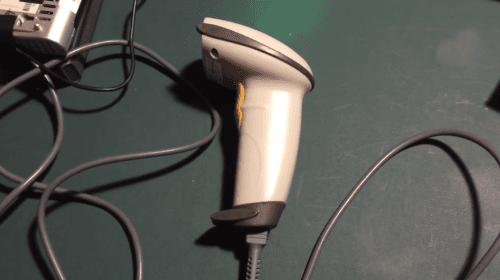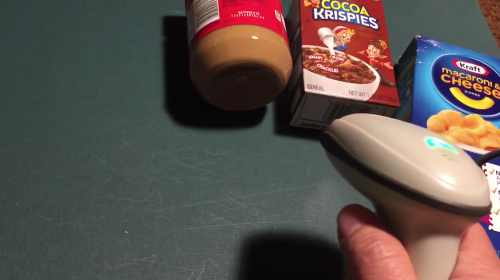To aid his mother in reading the labels of her groceries, Russell Grokett linked a laser barcode reader to a Raspberry Pi Zero W to read out the names of scanned item.
RASPBERRY PI TALKING BARCODE READER
My mom is unable to read labels on grocery items anymore, so I went looking for solutions. After seeing that bar code readers for the blind run many hundreds of dollars, I wanted to see what could be done using a Raspberry Pi and a USB Barcode reader.
- Werbung -- Werbung -
Exploring accessibility issues
As his mother is no longer able to read the labels on her groceries, Russell Grokett started exploring accessibility devices to help her out. When he came across high-priced barcode readers, he decided to take matters into his own hands.
Camera vs scanner
Originally opting for a camera to read the codes, Russell encountered issues with light and camera angle. This forced him to think of a new option, and he soon changed his prototype to include a laser barcode reader for around $30. The added bonus was that Raspbian supported the reader out of the box, reducing the need for configuration — always a plus for any maker.

Russell’s laser barcode scanner, picked up online for around $30
No internet, please
With the issues of the camera neatly resolved, Russell had another obstacle to overcome: the device’s internet access, or lack thereof, when his mother was out of range of WiFi, for example at a store.
Another key requirement was that this should work WITHOUT an internet connection (such as at a store or friend’s house). So the database and text-to-speech had to be self-contained.
Russell tackled this by scouring the internet for open-source UPC code databases, collecting barcode data to be stored on the Raspberry Pi. Due to cost (few databases are available for free), he was forced to stitch together bits of information he could find, resigning himself to inputting new information manually in the future.
I was able to put a couple open-source databases together (sources in appendix below), but even with nearly 700000 items in it, a vast number are missing.
- Werbung -To this end, I have done two things: one is to focus on grocery items specifically, and the other is to add a webserver to the Raspberry Pi to allow adding new UPC codes manually, though this does require at least local network connectivity.
Read it aloud
For the text-to-speech function of the project, Russell used Flite, as this interface makes a healthy compromise between quality of audio and speed. As he explains in his Instructables tutorial, you can find out more about using Flite on the Adafruit website.

When an item is scanned, the Raspberry Pi plays back audio of its name
In order to maintain the handheld size of the scanner, Russell used a Raspberry Pi Zero W for the project, and he repurposed his audio setup of a previous build, the Earthquake Pi.
Make your own
Find a full breakdown of the build, including ingredients, code, and future plans on Instructables. And while you’re there, be sure to check out Russell’s other Raspberry Pi–based projects, such as PiTextReader, a DIY text-to-speech reader; and the aforementioned Earthquake Pi, a light-flashing, box-rattling earthquake indicator for your desk.
Website: LINK
